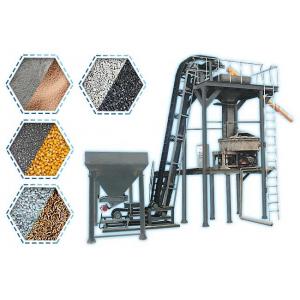

Add to Cart
Corrugated sidewall belt conveyor is one of the most commonly used mining equipment, which is widely used in mineral processing, construction materials, silicate and chemical industries. In the production of small scale, medium scale or large scale mineral processing Plants, it is generally used as the transportation machine for metal ores of gold, silver, copper, lead, zinc, nickel, manganese, iron, molybdenum , chromium, tin and others, as well as stone, rock, granite, limestone, quartz, graphite, feldspar, coal, etc.
1. Allowed inclined conveying, Max angle is up to 90 degree.
2. Easy cleaning.
3. Adjust speed and adjust height according to your need.
4. The machine be designed fixed belt conveyor and mobile belt
conveyor according to customer's need,
5. Conveying, loading and unloading equipment with high efficiency
and good flexibility
6. Smooth transportation, There is no opposite movement between the
goods and the transport belt, to avoid damage on the material to be
transported.
7. Less noise, suitable for the work environment requires
relatively quiet occasion.
8. If there is not external electric source, we can provide diesel
engine, electric generato
Belt width (mm) | Cleat height (mm) | Handling capacity (m3/h) | Belt speed (m/s) | Inclination arrange (°) |
| 500 | 80 | 11-84 | 0.8-2.5 | 30-90 |
| 100 | ||||
| 120 | ||||
| 650 | 100 | 23-180 | ||
| 120 | ||||
| 160 | ||||
| 800 | 120 | 36-280 | ||
| 160 | ||||
| 200 | ||||
| 1000 | 160 | 45-500 | ||
| 200 | ||||
| 240 | ||||
| 1200 | 200 | 57-800 | ||
| 240 | ||||
| 300 |
The horizontal loading section leads a deflection wheel bends the
belt into the feeding of the bulk material takes place on a mostly
horizontal feed path, where the side wall belt is supported by
loading impact idlers. The feeding of the conveyed material can be
achieved by direct feeding from a hopper, over a chute, a feeding
belt or a feeding pulley. The selection of the optimum feeding
station depends on the properties of the bulk material and the belt
speed of the vertical conveyor. The upward and downward strands are
encased from the bottom to the top. Substructures or support
rollers are not necessary in this section.
The vertical section leads over a deflection curve into the
horizontal discharge section. The deflection curve is made up of a
number of high specification pulleys. These pulleys experience the
vectored load of deflecting the belt tension from vertical to
horizontal.
At the drive pulley, the bulk material is discharged and the belt
is returned to the back going strand. Depending on the bulk
material properties, the drive pulley is followed by a beater wheel
for belt cleaning in the return side. The beater is self-driven.
Material that fails from the belt goes into the main delivery
chute. Lateral deflection wheels turn the belt from the horizontal
back to the vertical.
Belt conveyors are not allowed to overload run.
Check wear condition of the belt, the damaged should be repaired.
Operators should circuit to inspect to close observe belt conveyor running. Especially,temperature rise and noise of main motor and the brake working whether they are normal; contact state of the brake and oil level, noise of gear unit and run off of belt should be noticed;temperature rise and noise of all bearings and state of all transition loads point should be noticed;
notice to see whether the hopper are blocked, working state of pulley, idler, belt cleaner, take-ups and control equipment.
Operators should make good record if any abnormal. The belt conveyor should be stoppe on emergency.
Periodic overall: Minor overall should be once every monthes besides ordinary maintenance Overhaul should be once half past year or once every year.
